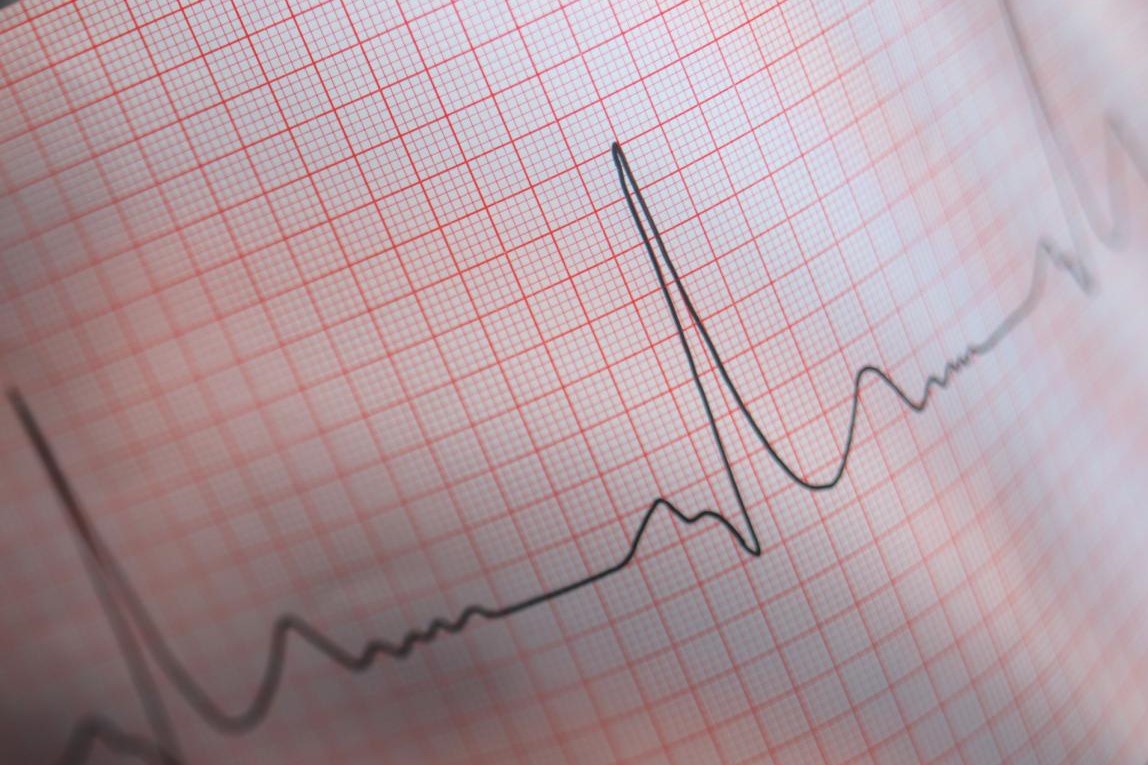
What is the electrocardiogram (ECG)?
The electrocardiogram is an outpatient diagnostic test that allows the electrical activity of myocardial fibres to be recorded and graphically visualised
It is a practical, simple to perform, non-invasive method of assessing whether mechanical or electrical pathologies of the heart (e.g. heart attacks or rhythm disorders) are present.
This test can be performed at rest, while the patient is lying supine on the couch, or under stress, while the patient is walking on a treadmill or pedalling on an exercise bike.
What is the electrocardiogram for?
The electrocardiogram at rest makes it possible to diagnose the presence of arrhythmias (alterations in cardiac rhythm); ischaemia and/or infarction (cardiac suffering caused by a reduction in blood flow to the heart muscle due to narrowing of a coronary artery); acquired or congenital heart cavity alterations (e.g. valvulopathies, cardiomyopathies, etc.); electrolyte disorders (alterations in the concentration of blood electrolytes); toxic effects of certain drugs.
The stress electrocardiogram, on the other hand, is performed to assess the behaviour of blood pressure, cardiac rhythm and the possible appearance of signs or symptoms of cardiac distress during physical labour.
Who can perform the electrocardiogram?
There are no contraindications for performing the standard electrocardiogram.
The exercise ECG is, however, contraindicated for patients who cannot undergo physical exertion, who have ongoing ischaemia/arrhythmia and severe heart failure with symptoms at rest.
Is the ECG painful or dangerous?
The ECG lasts only a few minutes.
The test is safe and painless and there are no particular contraindications to the test.
How does the ECG work?
Ten electrodes are applied to the patient’s skin to record the heart’s electrical activity.
The electrodes are connected by electrical wires to a device called an electrocardiograph, which processes and prints the graphical trace (electrocardiogram) on paper.
Read Also
Emergency Live Even More…Live: Download The New Free App Of Your Newspaper For IOS And Android
ECG: Waveform Analysis In The Electrocardiogram
What Is An ECG And When To Do An Electrocardiogram
ST-Elevation Myocardial Infarction: What Is A STEMI?
ECG First Principles From Handwritten Tutorial Video
ECG Criteria, 3 Simple Rules From Ken Grauer – ECG Recognize VT
The Patient’s ECG: How To Read An Electrocardiogram In A Simple Way
ECG: What P, T, U Waves, The QRS Complex And The ST Segment Indicate
Electrocardiogram (ECG): What It Is For, When It Is Needed
Stress Electrocardiogram (ECG): An Overview Of The Test
What Is The Dynamic Electrocardiogram ECG According To Holter?
Full Dynamic Electrocardiogram According To Holter: What Is It?
Cardiac Rhythm Restoration Procedures: Electrical Cardioversion
Twenty-Four-Hour Ambulatory Blood Pressure Monitoring: What Does It Consist Of?
Holter Blood Pressure: Everything You Need To Know About This Test
Cardiac Arrhythmias: Atrial Fibrillation


